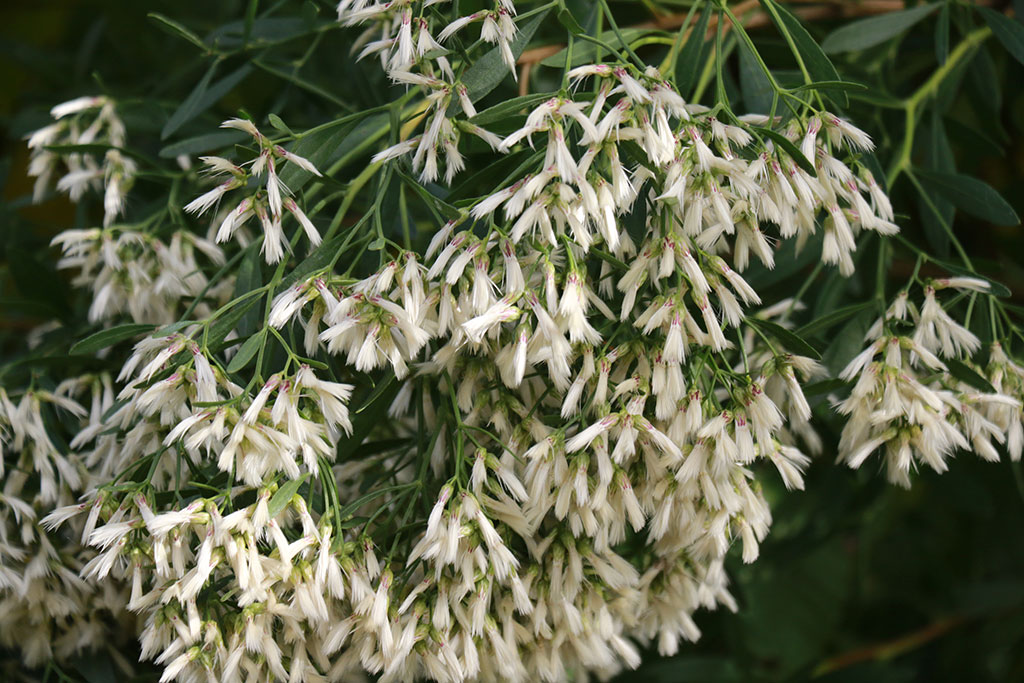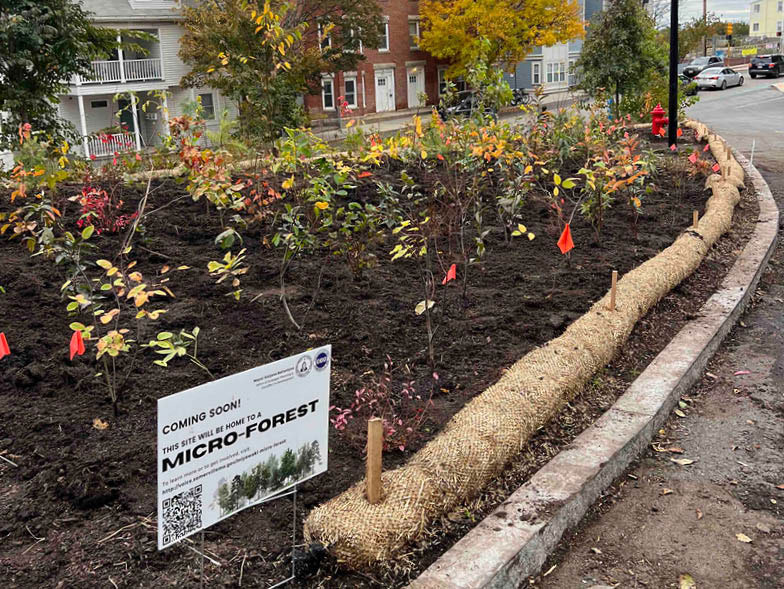Photography by Maya Dutta
In her classic hit “Big Yellow Taxi,” singer Joni Mitchell famously laments, “They paved paradise, put up a parking lot.”
Today, an opposite trend is growing as communities across the world, particularly urban ones, are converting spaces like those into vibrant mini oases known as Miyawaki forests.
This method, which has only recently begun to be implemented in the United States, was developed in the 1970s by Japanese forest ecologist Akira Miyawaki. He modeled his idea for pocket forests, or small groves of planted indigenous trees, after the protected ones he saw temple gardeners cultivating around Shinto shrines in Japan.
Miyawaki’s method of densely planting organic plots of trees can produce mature forests in mere decades instead of centuries. He grew over forty million trees in fifteen countries before his death in 2021, and there are now thousands of pocket forests in Japan, hundreds in India, and many elsewhere, including in Europe.

Converting landfill to forest
In 2021, Cambridge, Massachusetts, got its own pocket forest, the first to be planted in the northeastern United States. A collaboration between the city, the SUGi Project, and Biodiversity for a Livable Climate, the 4,000-square-foot microforest is about the size of a basketball court and sits in Danehy Park, a recreational area that was developed on former dumping grounds. “Such tiny forests are ideal for providing a respite from urban life,” says Maya Dutta, assistant director of regenerative projects for Biodiversity for a Livable Climate. “Because they can be created in such a small area, they are great options for communities that have been neglected or are experiencing intense pollution.”
Pocket forests can be planted just about anywhere—all that’s needed is about six parking spaces’ worth of land. “That’s one major reason people have adopted this idea, particularly in cities,” Dutta adds. “Even if you just have one abandoned lot, you can return it back to nature and quickly make a difference.”
About 1,400 trees and shrubs indigenous to the greater Boston area, including aspens, sumac, and tulip trees, were used to create the Danehy Park forest. One hundred volunteers spent more than eight hours installing the plants, and the existing soil was kept and amended with nutrients to support their growth, Dutta says.
In the near future, the area is expected to become a full-grown forest—its tallest trees had reached a height of eighteen feet just two years after being put in the ground. “It’s already dark in the forest,” Dutta notes. “It’s a stark contrast to what the land was like before.”
Because the trees are so close together, the saplings and shrubs will grow rapidly as they compete for water, sunlight, and space. Currently, a team of volunteers works to keep the fledgling forest free of weeds, but it eventually shouldn’t need any assistance, becoming an entirely self-reliant ecosystem.
“It only requires support for two to three years,” Dutta explains. “In that time, it will form a dense canopy that will completely suppress weeds and other invasive plants.” Additionally, over time, birds, bees and other pollinators, and local wildlife should populate it to create a thriving natural community.

Drawbacks and benefits
As great as they may seem, Miyawaki forests are not without their drawbacks, notably their price tags—the Danehy Park project reportedly cost Cambridge $18,000 for the plants and soil amendments. And that’s even with SUGi exempting the city from paying its consulting fee of $9,500.
However, the benefits these mini forests offer can make them well worth the cost. “Once one is established, it can remove heat from the air and cool the surrounding area,” Dutta says. “It can also help filter air pollution by emitting oxygen, producing cleaner air as a result. Also, because the roots can enable the soil to hold more water, it might also be able to prevent an intense rain from resulting in flooding.” Furthermore, she notes that the Danehy Park project provides a welcome green space for the city and may even help to remove the soil contaminants from the former dump. And volunteers enjoy returning to the forest to survey the fruits of their labor. “Folks love seeing the growth and being able to say, ‘I planted that,’” Dutta shares.

Since the Danehy Park project, Dutta has been instrumental in kick-starting a handful of additional microforests in the greater Boston area, including two at local high schools. She notes that the trend has taken hold in other places, too, such as in Los Angeles’s Griffith Park and at the Yakama Nation Correctional and Rehabilitation Facility in Washington State. The Griffith Park forest, which covers at least 900 square feet, has notably been a haven for local wildlife—many species of insects, birds, lizards, and squirrels have migrated to it for food and refuge. Even the toads would not be deterred, despite having to scale a concrete barrier, cross a bicycle trail, descend another bike roadway, and traverse a horse trail to get there. Apparently, like a field of dreams, if you build a Miyawaki forest, the wildlife will come.
For more info, visit bio4climate.org